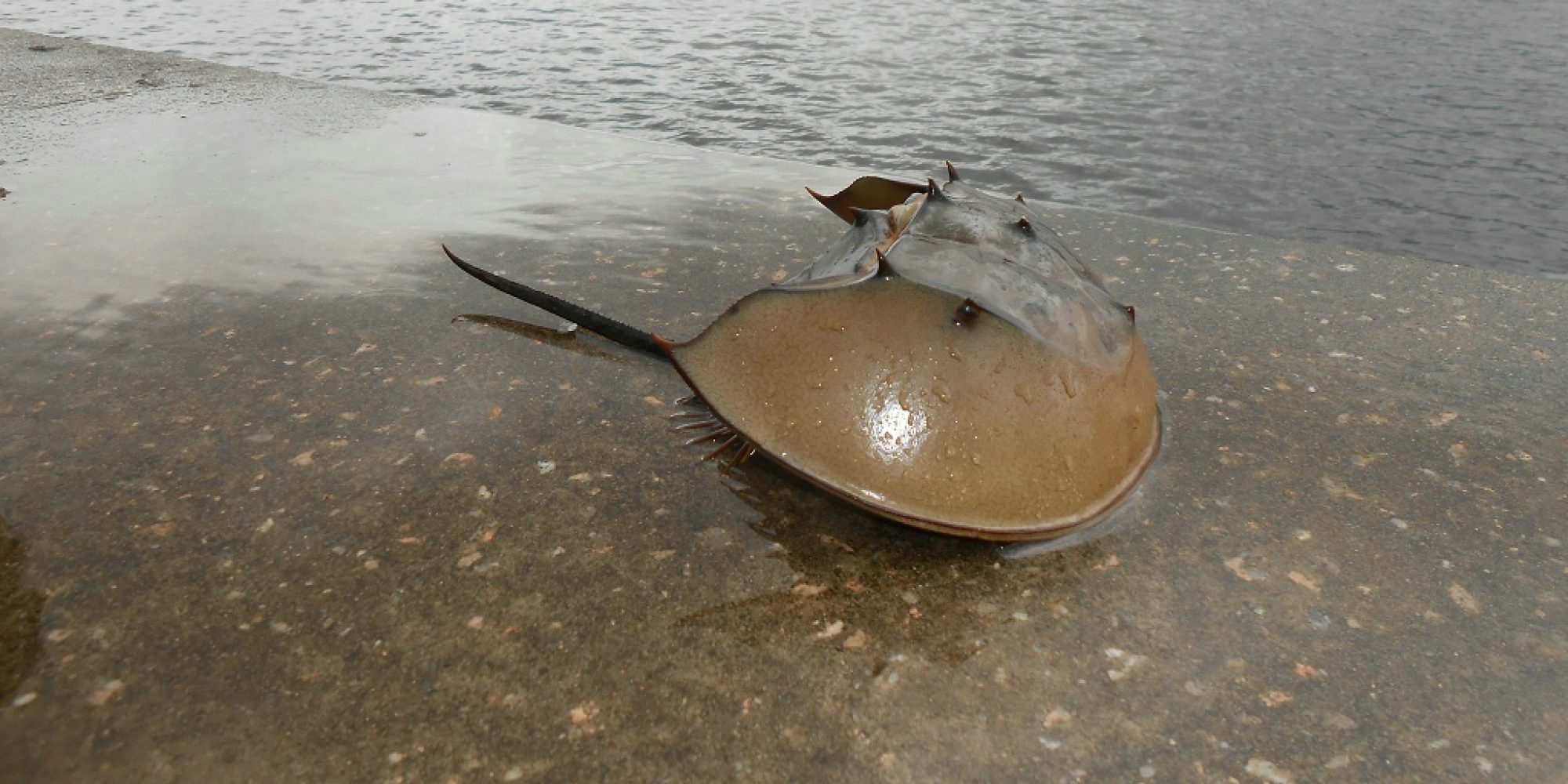Mating
Horseshoe crabs are able to breed after they are 10 years old. During breeding season, both male and female horseshoe crabs migrate from the deeper water to the shallow, muddy areas at high tide. The females will release a pheromone as a chemical ‘scent’ to let the males to find them. During the mating period, the males will select and follow a female and cling to the back of the female using their modified hook-like prosomal appendages. Then, the female will make a nest in the sand and lay her eggs while the male will fertilize the eggs externally by releasing sperm. The female will lay a few thousand eggs at one nest and usually several nests will be laid. This is because the eggs are eaten by many other creatures, including shore birds, crabs, fish and shrimps. Once the eggs are laid, the male and female head back to deeper water, and the eggs develop on their own.
Life cycle
Egg to Infancy
The fertilized eggs stay buried on the beach for two to four weeks. They then hatch into larvae, which is a miniature version of the adults. The larvae swim and feed in the open water for a few days before they settle in shallow, intertidal areas sea floor. Although tens of thousand of eggs were laid by the mother, only one in ten thousand (~0.001%) eggs survives to adulthood.
Juveniles to Adults
The larval horseshoe crabs molts into the first juvenile instar about three weeks after emergence. During molting, the larval horseshoe crabs shed their outer layer of shell (chitinous exoskeleton) to grow.
Juvenile horseshoe crabs normally spend their first few years on shallow sandy beaches or mudflats, usually near their breeding beaches. They remain buried in the sediment during high tide, emerging at low tide to feed on the exposed surface. They continue to molt regularly until they become adult and reach sexual maturity. Then they will move offshore and live in the sea bottom.
The horseshoe crab must molt to grow. This is because horseshoe crab shells do not grow with them, so they have to molt as they get bigger.

